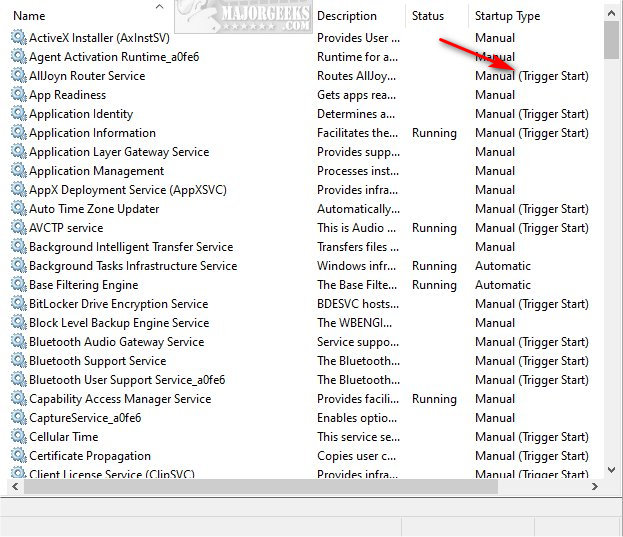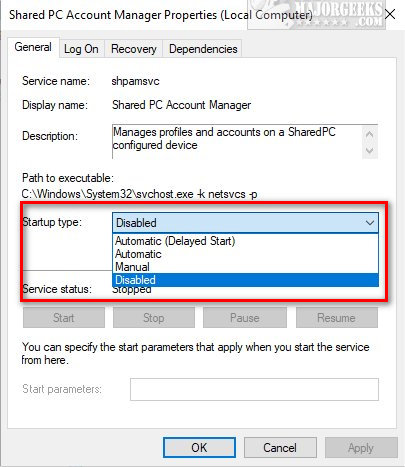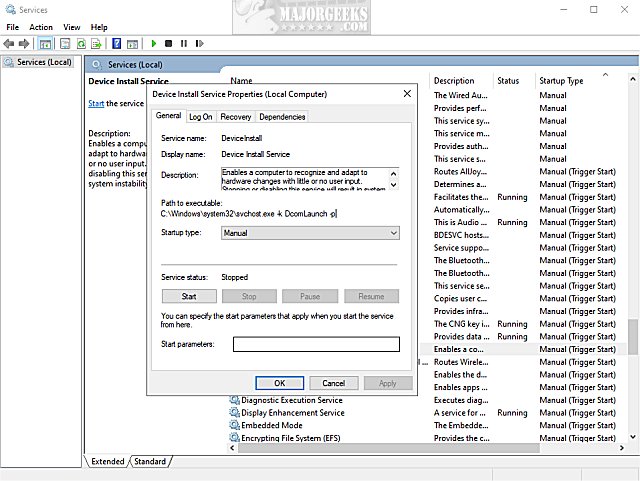Automatic and Manual Trigger Start Explained
By Timothy Tibbettson 06/15/2023 |
While looking at or editing your Windows Services, you probably noticed Manual (Trigger Start) and (Automatic (Trigger Start). In this tutorial, we explain what Trigger Start means.
Windows Services run in the background can be set to run manually, automatically, or disabled. When an application or Windows Service needs to start or stop a Service, this event is called a Trigger.

An Automatic service starts automatically with Windows.
A Manual service starts when another service or event starts the Service.
A Disabled Service never runs, unless you change the startup type, or add a Windows feature that requires it.

Finally, we come to Automatic or Manual Triggers.
Triggers are events that allow the Service to be started as needed. Most Windows computers will have 20 or 30 Trigger start Services.
For example, when your antivirus updates your signatures, that might trigger a service to download the update. If you add or remove devices, that will trigger.
Another good example you probably used and didn't know is the Device Install Service. If you plug in a new keyboard, mouse, or USB device, the Device Install Service (DeviceInstall) will be triggered so that Windows can adapt to the hardware changes, often without any user intervention.

Hopefully, that explains it for you.
Similar:
How to Restore or Verify Default Services in Windows 7, 8, and 10
How to Identify Processes or Services on Your Computer
How to Delete a Service in Windows 10, 8, and 7
How to Add Services to Control Panel in Windows
The Differences Between 32-bit and 64-bit Applications
comments powered by Disqus
Windows Services run in the background can be set to run manually, automatically, or disabled. When an application or Windows Service needs to start or stop a Service, this event is called a Trigger.

An Automatic service starts automatically with Windows.
A Manual service starts when another service or event starts the Service.
A Disabled Service never runs, unless you change the startup type, or add a Windows feature that requires it.

Finally, we come to Automatic or Manual Triggers.
Triggers are events that allow the Service to be started as needed. Most Windows computers will have 20 or 30 Trigger start Services.
For example, when your antivirus updates your signatures, that might trigger a service to download the update. If you add or remove devices, that will trigger.
Another good example you probably used and didn't know is the Device Install Service. If you plug in a new keyboard, mouse, or USB device, the Device Install Service (DeviceInstall) will be triggered so that Windows can adapt to the hardware changes, often without any user intervention.

Hopefully, that explains it for you.
Similar:
comments powered by Disqus






